Monaco Grand Prix's Recipe: Barbajuan
Welcome to Grand Prix Gastronomy! This week, I’m cooking barbajuan, Monaco's national
This project is pretty simple. As a complement to each race weekend, I’ll be cooking the national dish of that race’s host country and sharing information about the process and that dish’s history along the way in an effort to grow more deeply immersed in the local culture from my own home.
What Is Barbajuan?
If you’d have asked me to predict the national dish of Monaco, I think I’d have picked something like caviar or some swanky fish that costs too much money — or even something like bouillabaise, a fish soup from the south of France. Instead, my search told me it is instead a humble snack called barbajuan, which is basically a little filled pastry sold at market stalls in the country. Its name allegedly translates to “Uncle John,” after the creator of the dish, and you’d be most apt to eat this on Monaco’s national day. Somehow, it’s difficult to imagine Charles Leclerc snacking on one of these, but maybe I just have too many preconceived notions.
Basically, barbajuan is a pastry crust filled with Swiss chard, spinach, and ricotta cheese — like a ravioli filling, but in a crisp shell instead of a noodle. It kind of looks like an empanada, but a little less round, and you can find a pumpkin-filled version of this dish just across the border in Italy.
This Week's Recipe
I was surprised that barbarian recipes are few and far between on the ol’ interwebs, but I did nab one from Living in Monaco, a site dedicated to residents of the Principality. This version includes a filling of onion, leek, Swiss chard, spinach, oregano, ricotta, and Parmesan. I am not a massive ricotta fan, so I was a little hesitant to make a recipe that relies so heavily on it — but this is Grand Prix Gastronomy, and I’m trying to be authentic. So, I opted for a recipe that looked to feature plenty of other non-ricotta flavors, too.
And because I’ve been trying to make each of these cooking adventures into a full meal — and for as much as I’d love to eat fried pastries only for the rest of my life — I decided to whip up a fresh southern French specialty on the side. This salade Niçoise recipe from Food & Wine seemed like a great option — though I did substitute canned tuna for fresh, and I also got rid of the anchovies. I know, I know — I try not to make omissions based on preferences, but this salad isn’t the Actual For-Realsies Recipe Of Monaco, therefore I can do whatever I want.
Cooking Barbajuan
If this barbajuan did anything for me, it was remind me that I simply lack a decent amount of fine motor control. We'll get to that in a minute — but I will start by saying that this is a fairly straightforward and simple recipe if you’re willing to be generous with your dough folding skills.
The salade Niçoise actually took longer to prep thanks to the fact that I had to hard boil eggs, blanch green beans, and cook up little potatoes, but that leaves you plenty of time to prep the barbajuan. I started off making my filling first, but I'd actually recommend you make the dough to start. It needs a decent amount of time to rest in the fridge, and aside from the five minutes of kneading, it was ultra quick to put together.
After that, you'll be able to quickly prep your filling, since this recipe doesn't require a large quantity of anything. I chopped my leafy greens first and set those in their own bowl, then finely chopped my leeks and onions. The later two you'll sautée together first until they're soft, then add in the leafy greens until cooked. Once everything is cooked up, take your pan off the heat and let it cool for a few minutes.
That gives you time to get the rest of the filling ready! Mix some egg, ricotta, and grated parmesan, then stir in the filling before adding salt and pepper to taste. I let my filling cool fully in the fridge after that, since it made it easier to work with later on.
Then comes the hard part for those of us with dumb fingers. You'll roll out your dough on a lightly floured surface, then cut out a bunch of small circles. This recipe says it makes about 20 tiny barbajuans. You'll fill each circle of dough with about a teaspoon of filling, then seal it up using some egg white. Or, at least, you will in theory. I did a very poor job at this. I think my circles were a little too small and could have benefitted from being rolled out a little thinner before I tried putting in the teaspoon of filling. Trying to close the damn things up progressively got more difficult, like I was actively unlearning everything I thought I'd pick up in the cooking process — but I wasn't really concerned; as long as the barbajuan closed somehow, I'd be fine. I'd live. And I mostly achieved that, even if they were not handsome little things.
I let some vegetable oil heat up while I filled the last half of my barbajuan, so I was ready to drop them into the oil afterward. Basically, you just need to fry them up enough to get a nice browned pastry crust, then remove ‘em from the oil to drain on a paper towel. The end product is a beautifully crispy pastry filled with a creamy, savory ricotta filling that I physically could not stop eating. The fresh salad on the side was a fantastic complement.
I served everything up with a picpoul wine from the south of France. It's a really bright wine that has great acidity, minerality, and lemoniness that goes so well with the barbajuan. If you've never had a picpoul before, it makes a great and fun alternative to your trusty glass pinot gris or sauvignon blanc.
So, What's the Verdict?
I don't actually think there's any way to go wrong with fried pastry pockets of delicious, delicious filling — and that's exactly what I got with barbajuan. This was one of those foods that earned a long, heartfelt “yoooooooo” after I took my first bite.
I need exactly two fingers to count the number of times I've actually handmade my own fried pocket foods (my mom and I had a dalliance making egg rolls and pot stickers one long summer afternoon), so I'm going to count this dish as a success despite the fact that there's a lot I'd do differently next time.
First, I think my dough needed some additional work. As in, I think it probably needed a little more salt, maybe — but I also probably needed to roll out my dough a little thinner. Basically, I ended up with a fairly thick pastry crust. I didn't mind the thickness, personally, but if I kept it the same size, I'd want more salt. But I also would have had a much easier time sealing and shaping the pockets if they'd been thinner, in which case the relative salt content of the dough probably wouldn't have mattered as much, since you wouldn't have so much dough in a bite.
I'm also not entirely sure who this this recipe was designed for, but the amounts were so tiny! I have no ability to comprehend how much food I will get from 30 grams. I don't have that spatial sense. So, after I started cooking with all my ingredients, I very quickly learned that I was going to have a lot of spinach, chard, leeks, and cheese leftover. Maybe that's down to the amount of everything you have to buy in one go at American grocery stores, but I easily could have doubled or tripled the barbajuan recipe based solely on the amount of spinach I had to buy in one bunch.
That being said, I used my leftover veggies in omelets, and I used my ricotta for a “clean out the fridge” pasta. If I had been a thinking man, I'd have pre-made a ton of little barbajuan bites and popped the uncooked in the freezer to whip up later. I'm sure these tasty bites would be just as great baked in the oven or popped in the air fryer!
Let's Chat!
If you want to stay tuned…
Here are all the relevant links in one place, if you want to subscribe:
All Grand Prix Gastronomy-related content will be free — but if you want to drop me a donation on PayPal, that’s always welcome.





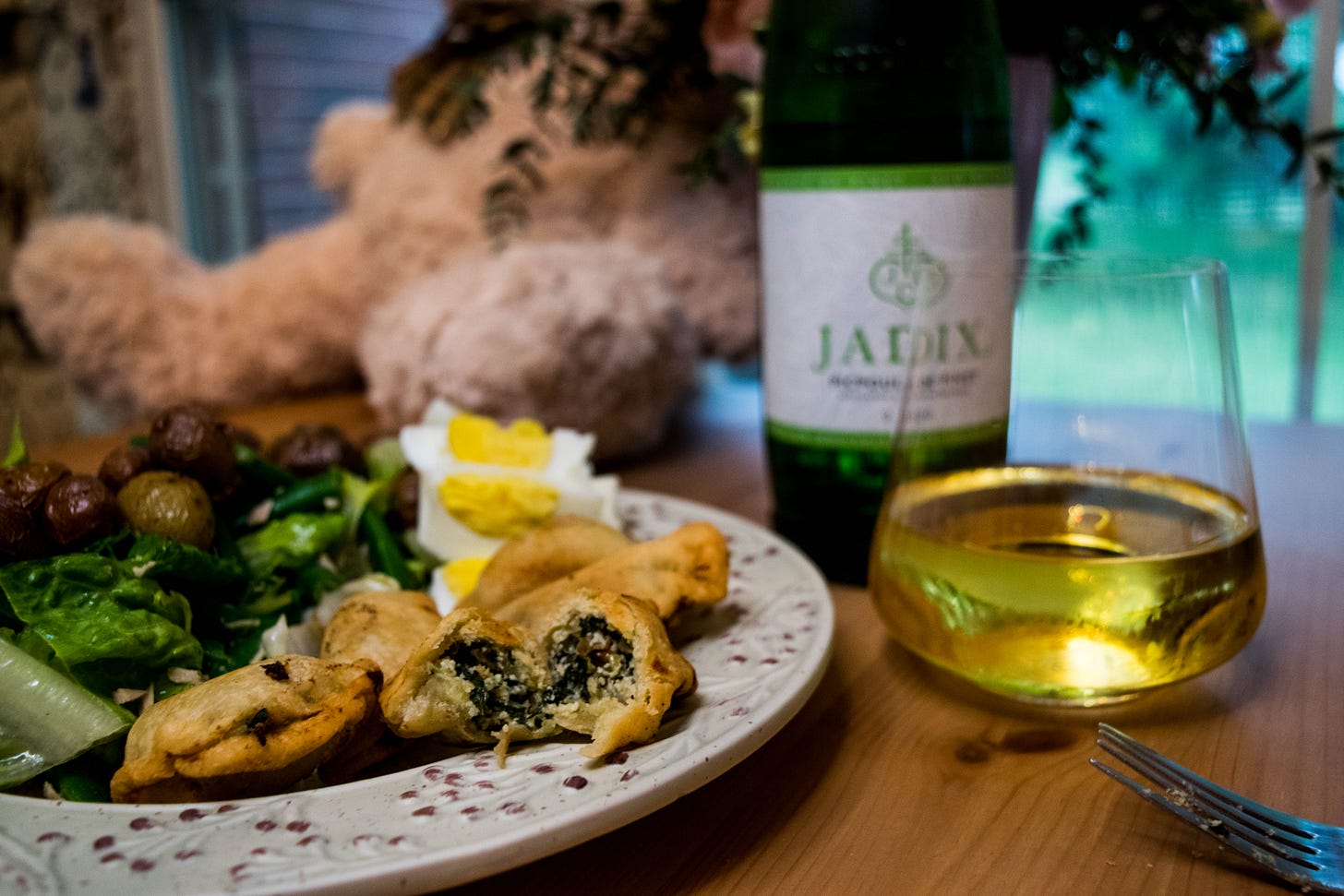


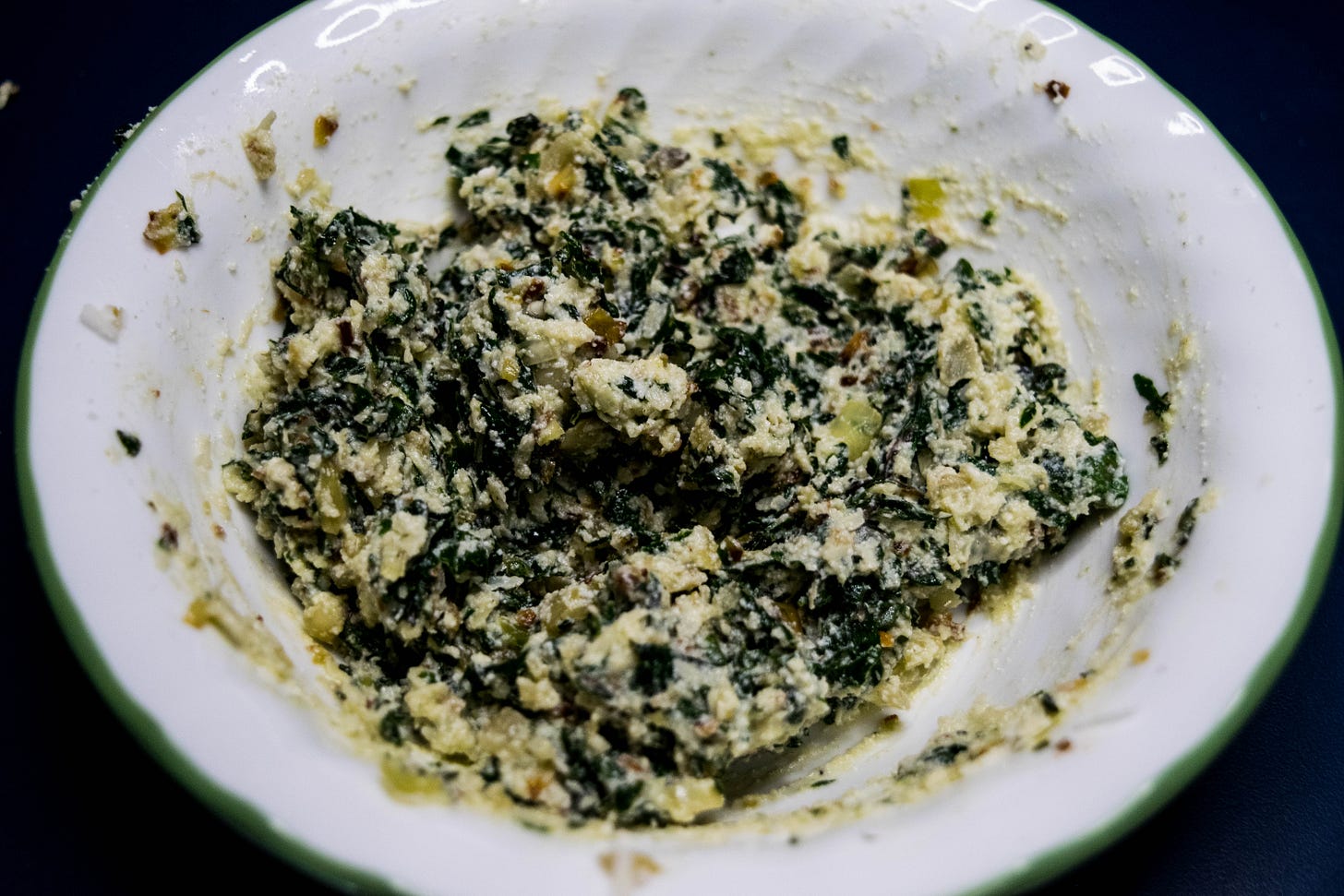
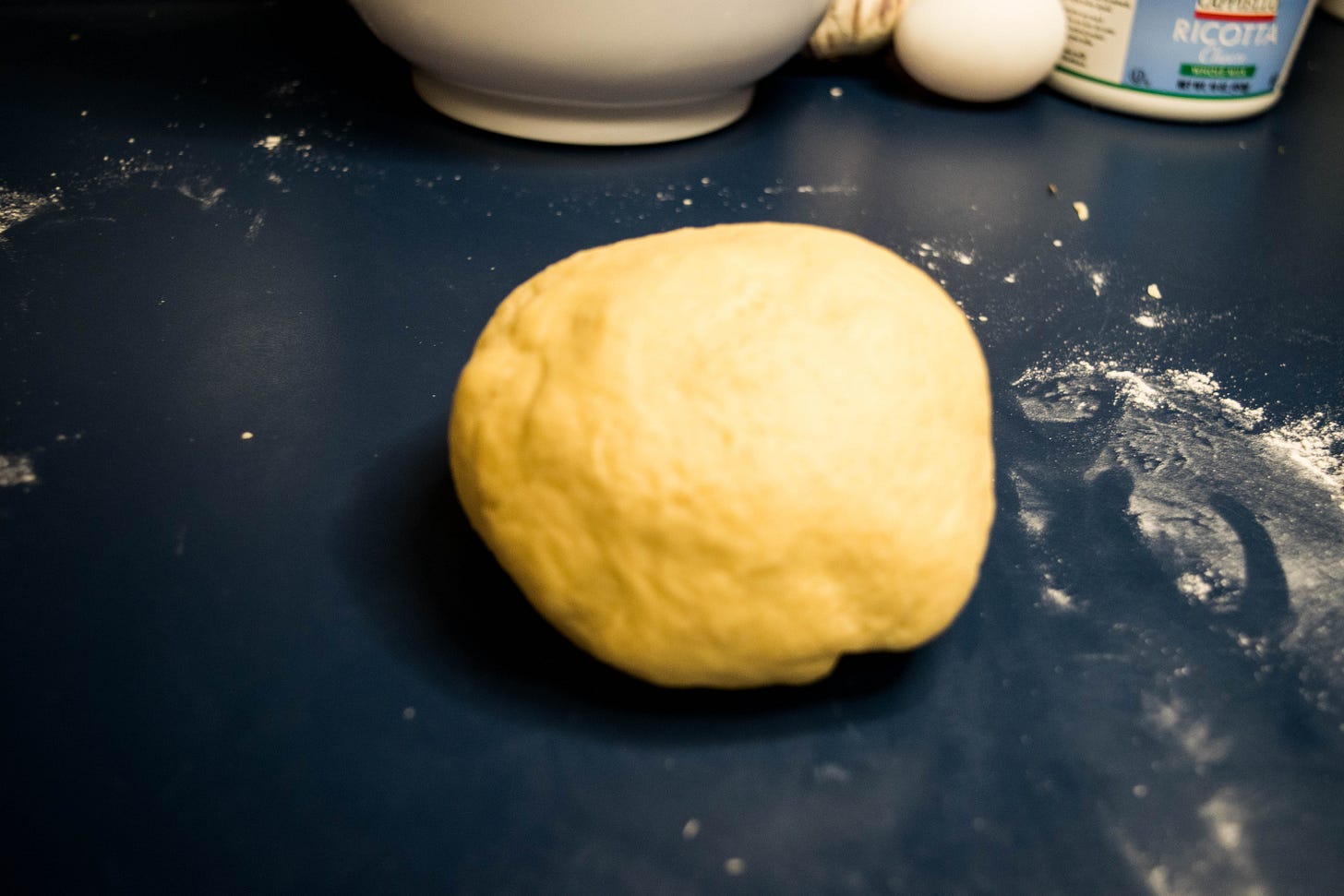



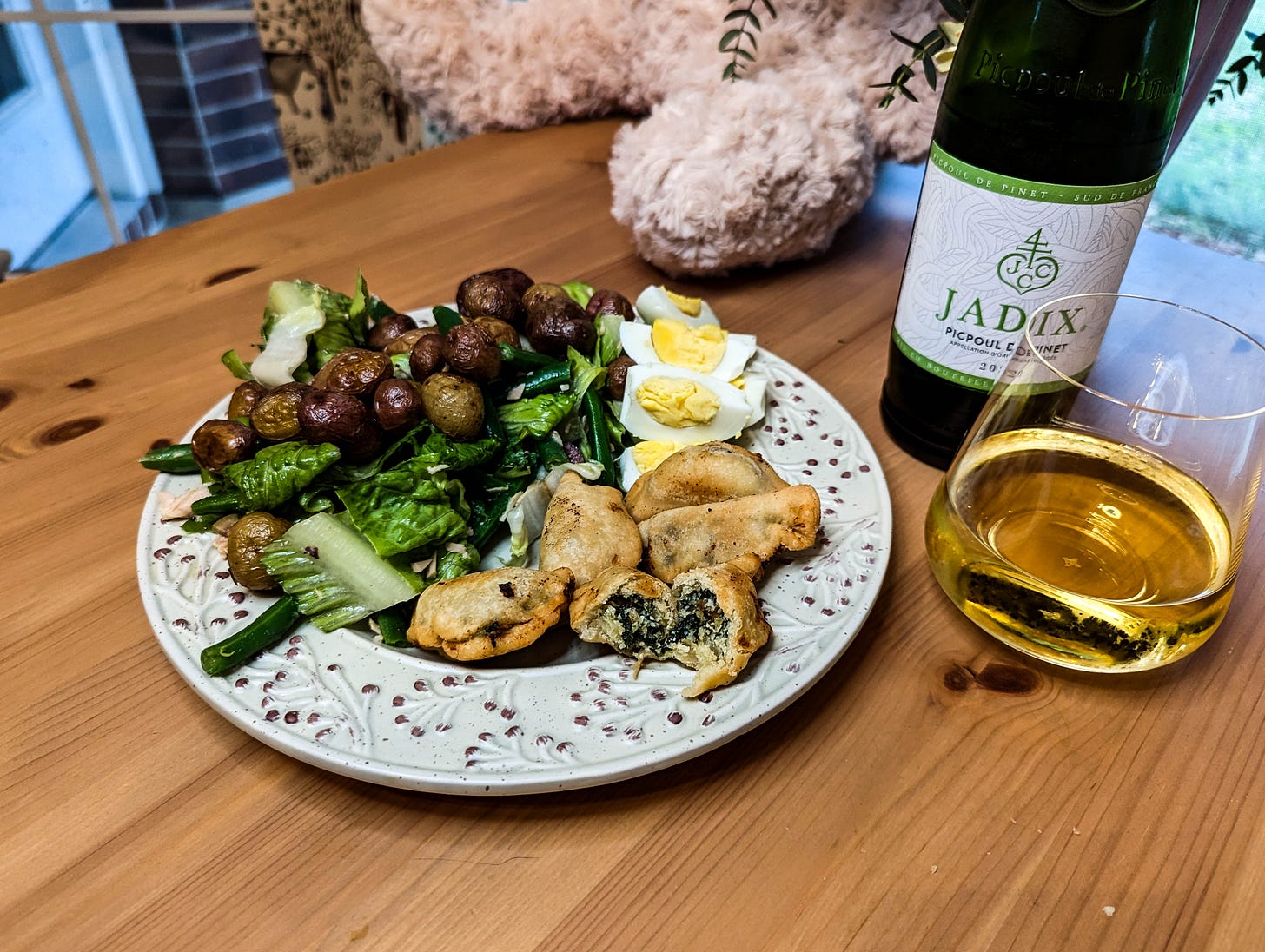
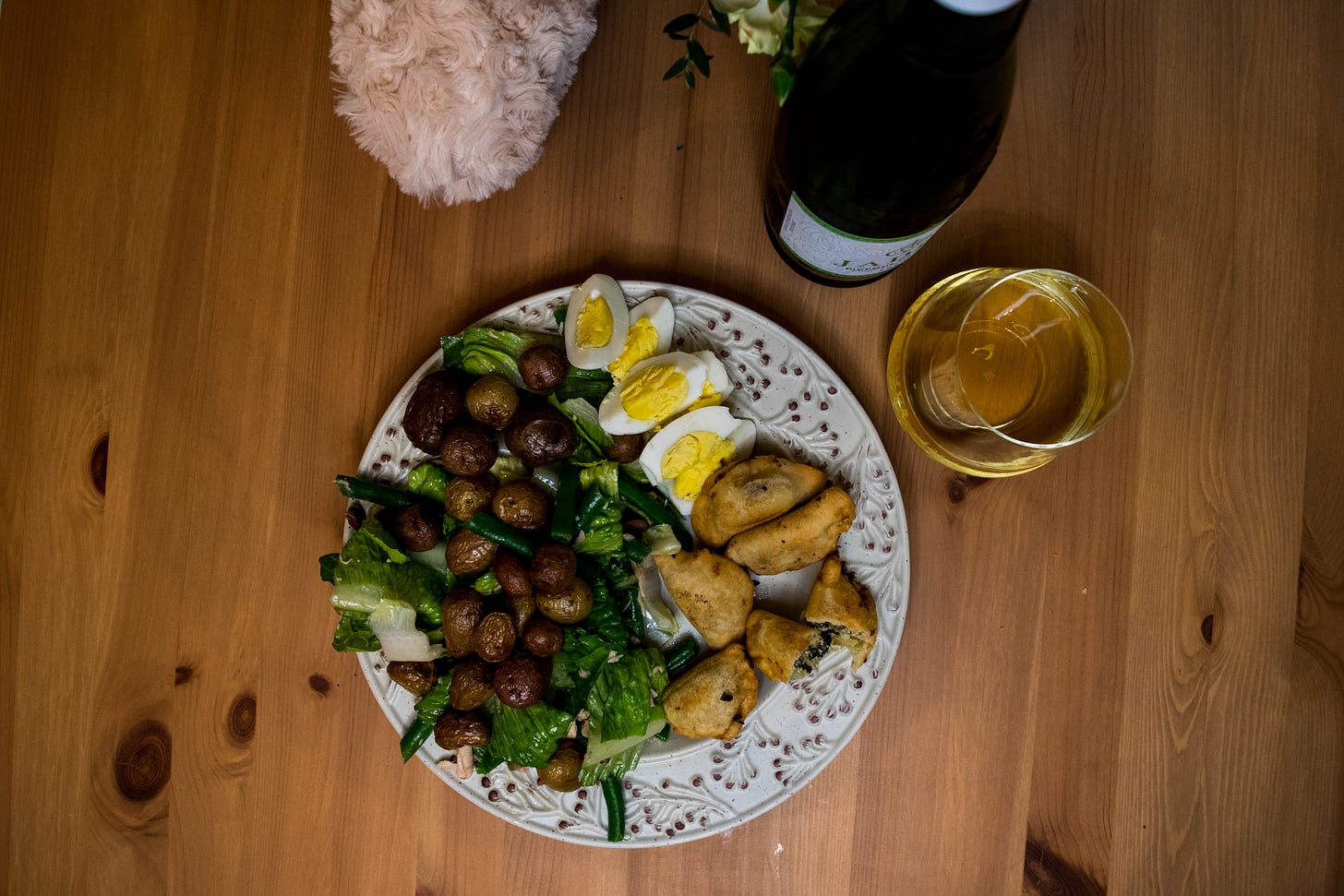

We really loved these, thank you for sharing your ideas. I have been cooking through the F1 series for a year now, some of the things I didn’t have the confidence to try, but this post inspired me to try 😊